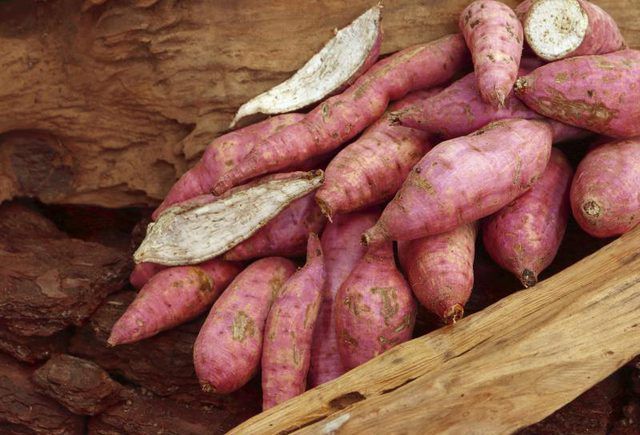Bulbs
Flower Basics
Flower Beds & Specialty Gardens
Flower Garden
Garden Furniture
Garden Gnomes
Garden Seeds
Garden Sheds
Garden Statues
Garden Tools & Supplies
Gardening Basics
Green & Organic
Groundcovers & Vines
Growing Annuals
Growing Basil
Growing Beans
Growing Berries
Growing Blueberries
Growing Cactus
Growing Corn
Growing Cotton
Growing Edibles
Growing Flowers
Growing Garlic
Growing Grapes
Growing Grass
Growing Herbs
Growing Jasmine
Growing Mint
Growing Mushrooms
Orchids
Growing Peanuts
Growing Perennials
Growing Plants
Growing Rosemary
Growing Roses
Growing Strawberries
Growing Sunflowers
Growing Thyme
Growing Tomatoes
Growing Tulips
Growing Vegetables
Herb Basics
Herb Garden
Indoor Growing
Landscaping Basics
Landscaping Patios
Landscaping Plants
Landscaping Shrubs
Landscaping Trees
Landscaping Walks & Pathways
Lawn Basics
Lawn Maintenance
Lawn Mowers
Lawn Ornaments
Lawn Planting
Lawn Tools
Outdoor Growing
Overall Landscape Planning
Pests, Weeds & Problems
Plant Basics
Rock Garden
Rose Garden
Shrubs
Soil
Specialty Gardens
Trees
Vegetable Garden
Yard Maintenance
Types of Red Sweet Potatoes
Types of Red Sweet Potatoes. Despite what some supermarket labels say, sweet potatoes (Ipomoea batatas) are not related to either yams (Dioscorea family) or white potatoes (Solanum tuberosum), which belong to the nightshade family. Sweet potatoes are herbaceous perennials, which means that outside U.S. Department of Agriculture plant hardiness...

Despite what some supermarket labels say, sweet potatoes (Ipomoea batatas) are not related to either yams (Dioscorea family) or white potatoes (Solanum tuberosum), which belong to the nightshade family. Sweet potatoes are herbaceous perennials, which means that outside U.S. Department of Agriculture plant hardiness zones 9 through 11, they normally grow as annuals. Sweet potato plants may have a bushy habit or sprawl out in vine form. The flesh ranges from white to shades of orange to deep purple. Skins can be nearly white to deep purple, with yellow, red and coppery hues in between.
Bush-Type Red Sweet Potatoes
The compact growth of bunch, or bush-type, sweet potatoes makes them a good choice for small spaces and container gardening.
"Porto Rico" has a red to copper-colored skin and light red to reddish orange flesh. Tubers are ready to harvest about 100 days after planting.
"Bettys" is a semi-bunching heirloom variety that produces early, making it good for cooler areas with shorter growing seasons. It has pinkish-red skin and deep orange flesh.
"Georgia Jet" is ready to harvest around three months after planting. This variety has orange flesh and red to reddish purple skin. It's a prolific producer.
Vine-Type Red Sweet Potatoes
If you have room for them, sweet potato vines are not only attractive, but many varieties are quite prolific. If you're lucky, the plant may produce blooms that resemble morning glories.
"Red Jewel" matures in 129 to 149 days. It has a dark red skin and deep orange flesh. Good for baking, this high-yielding variety has a creamy, low-fiber texture when cooked.
"Red Japanese" has red to purple skin and cream-colored flesh. It matures in about 100 days. It should not be confused with "Okinawa," which has cream-colored skin and purple flesh.
"Carolina Ruby" produces dark red to purple sweet potatoes with deep, reddish-orange flesh.
"Darby" is another red-skinned variety with deep orange flesh. It matures in 115 days.
"Hernandez" matures late in the season at around 125 days, but is prolific. Its red-skinned tubers are good for baking.
Growing Sweet Potatoes
Choose varieties with the best natural disease resistance. Sweet potatoes grow best in loose soils rich in compost or other organic matter. Called "slips," the young plants can go in the garden or a container as soon as the soil gets warm following the last frost. Plant slips 12 to 18 inches apart on mounds or raised beds to improve drainage. Plant vine-type sweet potatoes in rows 3 to 4 feet apart. Keep the new plants moist, but not wet, until the vines are established. Then only water during extended dry spells. The spreading vines will naturally suppress weeds, and the plants require little in the way of care until a month before harvest, when you'll need to provide supplemental water for the tubers unless the garden gets plenty of natural rain.
Harvesting and Storage
When harvesting sweet potatoes, dig them up and let them dry out for a couple of hours. After that, cure them for up to two weeks in a warm room, and then store them in a cool, dry place. Cook up the potatoes as soon as possible for the best flavor. Although some varieties keep well longer, most sweet potatoes should be used within three or four months. Begin harvesting when the leaves begin to yellow. Make sure the soil is dry when you dig the tubers, and be careful not to injure the sweet potatoes or they will spoil more quickly.